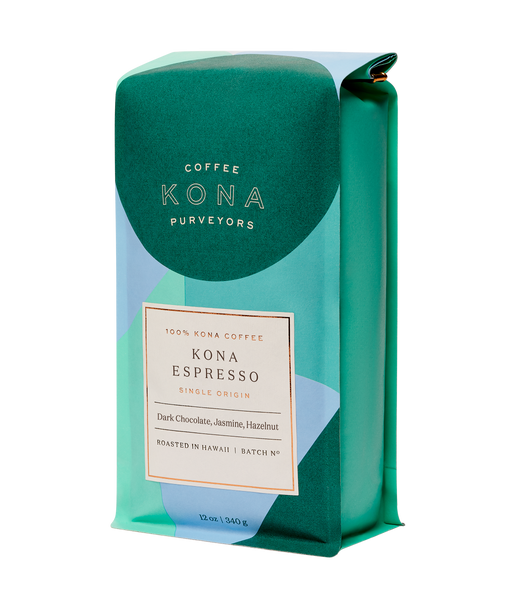How to Store SOE Single Origin Espresso for Maximum Freshness
How to Store SOE Single Origin Espresso for Maximum Freshness
Blog Article
Coffee Beans 101: Whatever You Required to Find Out About Coffee and Blended Coffee Beans
When it comes to coffee, recognizing the subtleties of espresso and blended beans can transform your everyday cup. From the expanding procedure to toasting strategies, every action plays a function in your coffee experience.
Recognizing Coffee Beans: Ranges and types
When diving into the globe of coffee, comprehending the kinds and selections of coffee beans is essential for every fanatic. Arabica beans are known for their smooth, complex flavors and lower caffeine material, making them a favorite amongst coffee aficionados.
Within these species, you'll find numerous local selections, each bringing special attributes. Ethiopian Yirgacheffe offers brilliant flower notes, while Colombian beans provide a well-balanced flavor account. As you check out, bear in mind to focus on processing techniques like cleaned or natural, as they can considerably affect the final taste. By familiarizing yourself with these beans and their tastes, you'll raise your coffee experience and make more enlightened selections in your brewing trip.
The Expanding Process: From Seed to Bean
When you explore the trip of coffee, all of it beginnings with seed selection strategies that establish the structure for top quality. From there, growing and harvesting play necessary functions in ensuring the beans flourish. Ultimately, processing approaches transform those gathered cherries right into the coffee beans you like.
Seed Choice Strategies
Selecting the right seeds is crucial for producing high-grade coffee beans, as it lays the structure for the entire expanding procedure. You need to begin by choosing seeds from respectable sources that prioritize quality and hereditary variety. Seek varieties understood to prosper in your details environment and dirt conditions. Take notice of the seed's age and storage conditions, as fresh seeds often tend to sprout far better. When possible, choose for natural seeds to decrease exposure to harmful chemicals. Consider the illness resistance of various varieties, as this can considerably impact your yield. Don't wait to seek advice from with local farmers or experts to gain insights into the ideal seed alternatives for your area. This expertise will improve your coffee-growing experience.
Cultivation and Harvesting
As you nurture your coffee seeds right into thriving plants, understanding the growing and harvesting process is crucial for accomplishing the most effective taste and top quality. Start by planting your seeds in well-draining dirt, preferably in a shaded area to protect them from straight sunshine. As your plants expand, maintain regular moisture, and bear in mind their requirement for nutrients. Trim consistently to advertise airflow and healthy and balanced development.
When it comes time to harvest, search for ripe cherries, which generally transform a dynamic red. Hand-picking is typically the most effective method to assure only the ripest cherries are chosen. Timing is necessary; harvesting also early or far too late can influence the flavor account of your beans. Accept patience and care, as this is where high quality begins.

Handling Techniques Clarified
When you've collected your coffee cherries, the next essential step is refining them to change those vivid fruits into the beans you'll make. There are two primary methods: the completely dry process and the damp procedure. In the completely dry procedure, you spread out the cherries out in the sun to completely dry, enabling the fruit to ferment and impart unique tastes to the beans. On the other hand, the wet process involves eliminating the fruit quickly and fermenting the beans in water, resulting in a cleaner taste. After handling, the beans are hulled, arranged, and usually dried once again. Each method impacts the taste account, so explore both can help you discover your favorite brew. Comprehending these approaches is crucial to appreciating your coffee experience.
Roasting Strategies: How Flavor Is Established
When it pertains to roasting coffee beans, comprehending roast degrees is vital to exposing their distinct flavors. Each toasting strategy effects the scent and improves the flavor growth process, giving you a richer coffee experience. Allow's discover exactly how these aspects come together to raise your daily brew.
Roast Degrees Discussed
Roast levels play a crucial role in shaping the flavor account of your coffee. By comprehending these levels, you can better select a coffee that matches your taste choices. Experiment with different roasts to discover which one resonates with you, enhancing your overall coffee experience and satisfaction.
Influence On Fragrance
The roast degree not only influences the preference of your coffee however also greatly affects its scent. When you select a light roast, you'll frequently observe intense, flower notes that can make your coffee odor fresh and vibrant. As the beans darken, the aroma changes; a medium roast brings out much more well balanced, caramelized fragrances, while a dark roast has a tendency to include bold, great smoky touches. Each toasting method releases various volatile compounds, shaping how your coffee smells. Additionally, the quality of the beans plays a crucial role; newly roasted coffee releases much more aromatic oils, boosting that tempting fragrance. So, pay attention to the roast degree-- it's crucial to disclosing the full fragrant experience of your mixture.
Taste Advancement Process
As you discover the taste development process, you'll discover that roasting strategies play a vital function in shaping the preference account of your coffee. The toasting temperature and time directly influence the level of acidity, sweet taste, and bitterness of the beans. Light roasts keep more of the bean's original tastes, highlighting floral and fruity notes. Tool roasts balance acidity and body, supplying a well-shaped taste. Dark roasts, on the various other hand, highlight strong, great smoky attributes while lessening the bean's intrinsic qualities. During toasting, chemical responses, like the Maillard response and caramelization, change the beans and enhance their complexity. Exploring with different roasting degrees can aid you find your excellent brew, so don't be reluctant to taste and find the rich spectrum of flavors!
Espresso vs. Blended Coffee: Key Differences
Coffee and blended coffee each offer distinct experiences that cater to various preferences and choices. Espresso is a focused coffee brewed by compeling hot water via finely-ground coffee beans, resulting in an abundant, strong taste and a velvety layer of crema on the top. It's typically taken pleasure in as a shot or utilized as a base for drinks like coffees and lattes.
On the other hand, useful reference blended coffee incorporates numerous beans from different regions, developing an extra balanced taste profile. You'll often find blends that highlight sweet taste, body, or level of acidity, making them flexible for different developing approaches. While coffee focuses on intensity, blended coffee may provide a broader series of tastes that can transform with each sip.
Eventually, your option in between espresso and mixed coffee come down to your personal preference. Whether you hunger for a leisurely mug or a fast jolt, both options have something scrumptious to provide.

Brewing Approaches: Unlocking the Perfect Cup
When it top article pertains to brewing coffee, locating the right method can change your experience and elevate your cup. Each brewing technique has its one-of-a-kind appeal and can substantially impact your coffee's flavor and scent. For instance, making use of a French press enables you to delight in a abundant and full-bodied mixture, while a pour-over approach supplies a clean, intense mug with distinct tastes.
If you favor espresso, buying a high quality machine can help you understand the art of pulling shots. Alternatively, for comfort, a single-serve covering system offers speed without giving up taste.
Do not neglect concerning chilly mixture, which delivers a smooth, much less acidic coffee perfect for hot days. Experiment with various techniques to find what resonates with your palate.
Sampling Notes: Determining Flavor Profiles
Exactly how can you absolutely value your coffee if you don't know what flavors to look for? Sampling notes are your guide to recognizing the intricate globe of coffee. Some coffees could leave a chocolatey or caramel aftertaste, while others may have a bright, tidy finish.
Consider the body of the coffee, also; is it airy and light or thick and syrupy? Do not forget level of acidity; an intense level of acidity can add life, while a low level of acidity may give a smoother experience. By identifying these flavor profiles, you'll grow your link with each mug, making coffee sampling a fascinating journey of exploration.

Tips for Selecting and Storage Coffee Beans
Choosing and saving coffee beans correctly can significantly boost your brewing experience. Start by selecting high-quality beans that fit your taste. Seek quality; beans baked within the last 2 weeks are ideal. Check the roast date on the product packaging, and purchase from respectable roasters or local shops.
Once you have your beans, store them in an airtight container to protect against exposure to light, air, and moisture. A dark, amazing area works best, so avoid maintaining them in the fridge or fridge freezer, as this can introduce wetness. Just grind the quantity you need to preserve freshness; entire beans keep taste longer than pre-ground coffee.
Finally, try to utilize your beans within 2 to 4 weeks after opening up for peak preference. Adhering to these pointers will ensure your coffee remains flavorful and enjoyable, elevating your everyday brew to new heights.
Regularly Asked Questions
How Much Time Do Coffee Beans Stay Fresh After Roasting?
Coffee beans stay fresh for about two weeks after toasting - SOE. You need to save them in an airtight container, far from light and moisture. After that, their flavor and fragrance begin to reduce considerably

Can I Mix Different Coffee Bean Varieties?
Definitely, you can mix various coffee bean ranges! Explore blends can enhance tastes and create a special preference profile. Simply make sure to balance the toughness and qualities of each range for the ideal outcomes.
What Is the Perfect Work Dimension for Espresso?
For espresso, you'll want a great grind dimension, regarding the structure of table salt. This allows suitable removal, leading to a rich, flavorful shot. Experiment a bit to find what matches your taste best!
Just How Does Elevation Affect Coffee Bean Taste?
Altitude impacts coffee bean taste by influencing the growth rate and chemical composition. Higher elevations cause slower growth, which improves level of acidity and intricacy, providing your coffee a vivid and special taste you will not fail to remember.
Are There Decaffeinated Versions of Espresso Beans?
Yes, there are decaffeinated variations of coffee beans. You can delight in Source an abundant espresso flavor without the high levels of caffeine kick. Just seek "decaf" blends at your local coffee store or specialty shop.
Coffee Beans 101: Whatever You Required to Know About Coffee and Blended Coffee Beans.
When diving right into the globe of coffee, comprehending the kinds and ranges of coffee beans is crucial for every fanatic.When it comes to toasting coffee beans, understanding roast degrees is key to revealing their special tastes. Espresso is a concentrated coffee made by forcing hot water with finely-ground coffee beans, resulting in an abundant, bold taste and a luscious layer of crema on top.On the various other hand, combined coffee integrates numerous beans from different regions, creating an extra well balanced flavor account.
Report this page